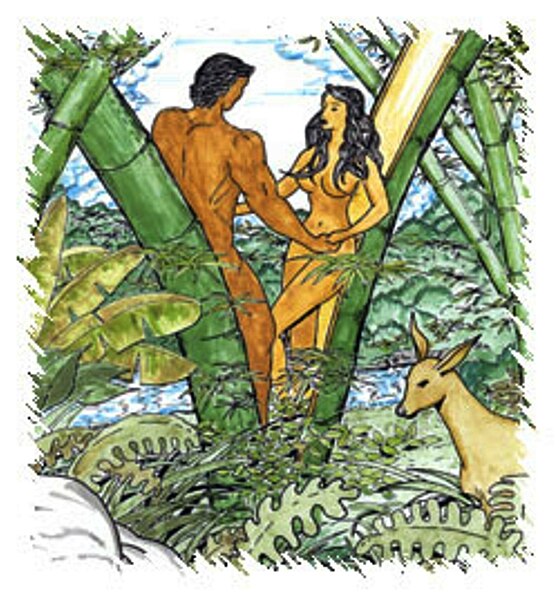The Tikbalang (/ˈtikbaˌlaŋ/) is a creature of Philippine folklore said to lurk in the mountains and rainforests of the Philippines. It is a tall, bony humanoid creature with the head and hooves of a horse and disproportionately long limbs, to the point that its knees reach above its head when it squats down. In some versions, it is a transformation of an aborted fetus sent to earth from limbo.
Tikbalang
Philippine mythology is rooted in the many indigenous Philippine folk religions. Philippine mythology exhibits influence from Hindu, Muslim, Buddhist, and Christian traditions.
Portrait of the first man, Malakas, and woman, Maganda, who came out from a bamboo pecked by the bird form of the deity of peace, Amihan, in Tagalog mythology
The Maranao people believe that Lake Lanao is a gap that resulted in the transfer of Mantapoli into the center of the world.
The Tagalog people's Obando Fertility Rites, before becoming a Catholic festival, was initially an animist ritual dedicated to the intersex deity, Lakapati, who presided over fertility, the goddess of love, Diyan Masalanta, and the supreme god, Bathala.
The Virgin of Antipolo has animist connections. Many of the rituals and prayers connected to the Lady of the Breadfruit (Tipolo) Tree have similarities to the pre-colonial indigenous cult of Maguayen, the Visayan god to whom people made offerings before building a boat or embarking on a voyage. Similarly, the Virgin of Antipolo is also asked for protection and well-being, as well as for the blessing of new cars, the modern mode of transportation.





